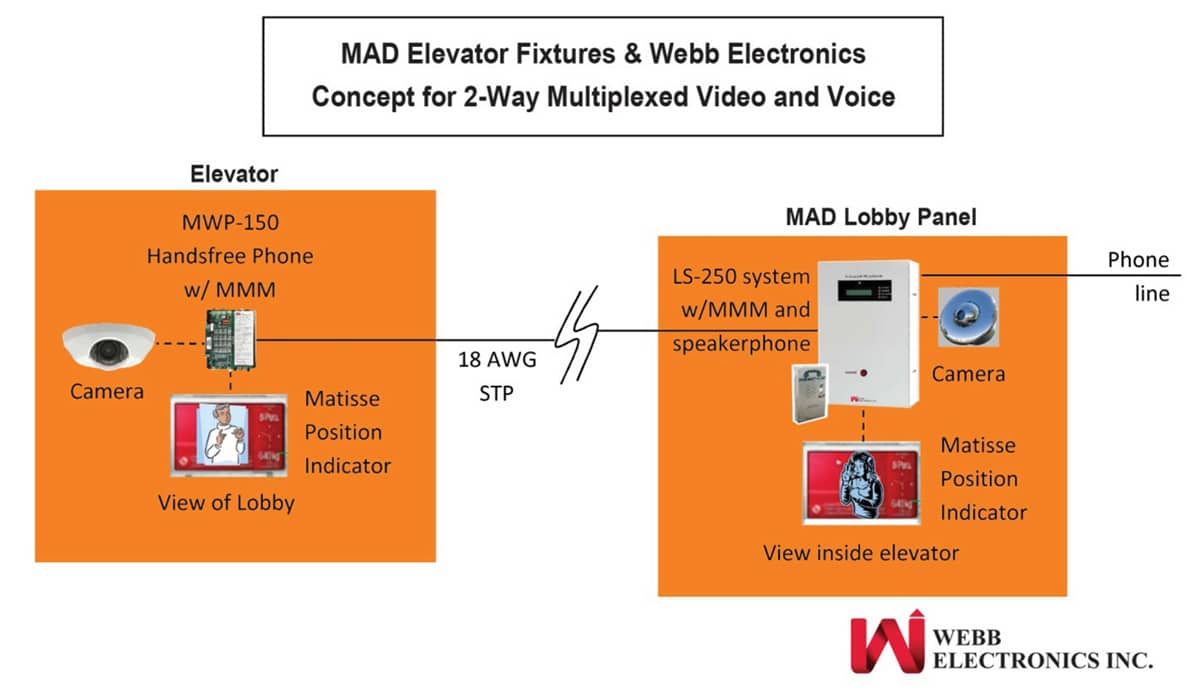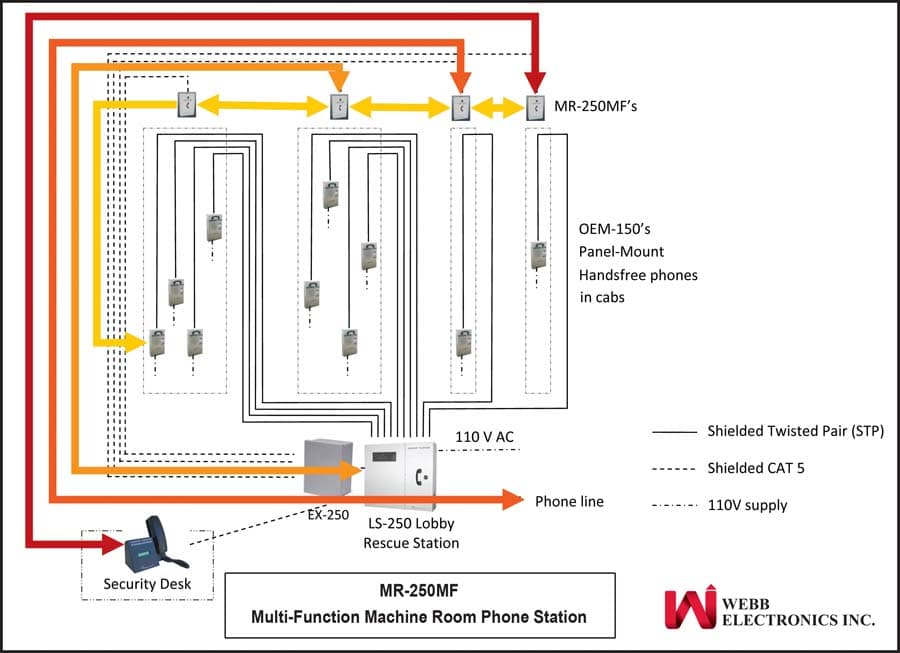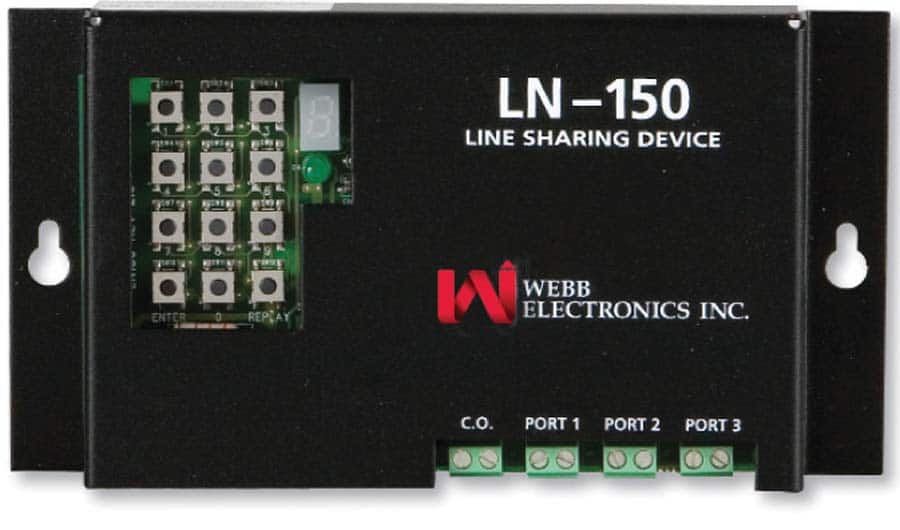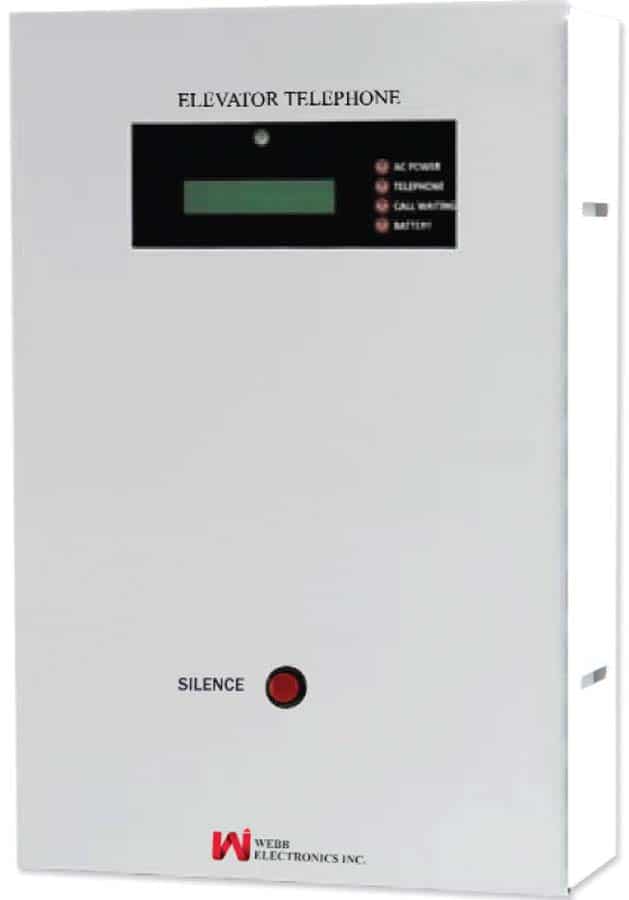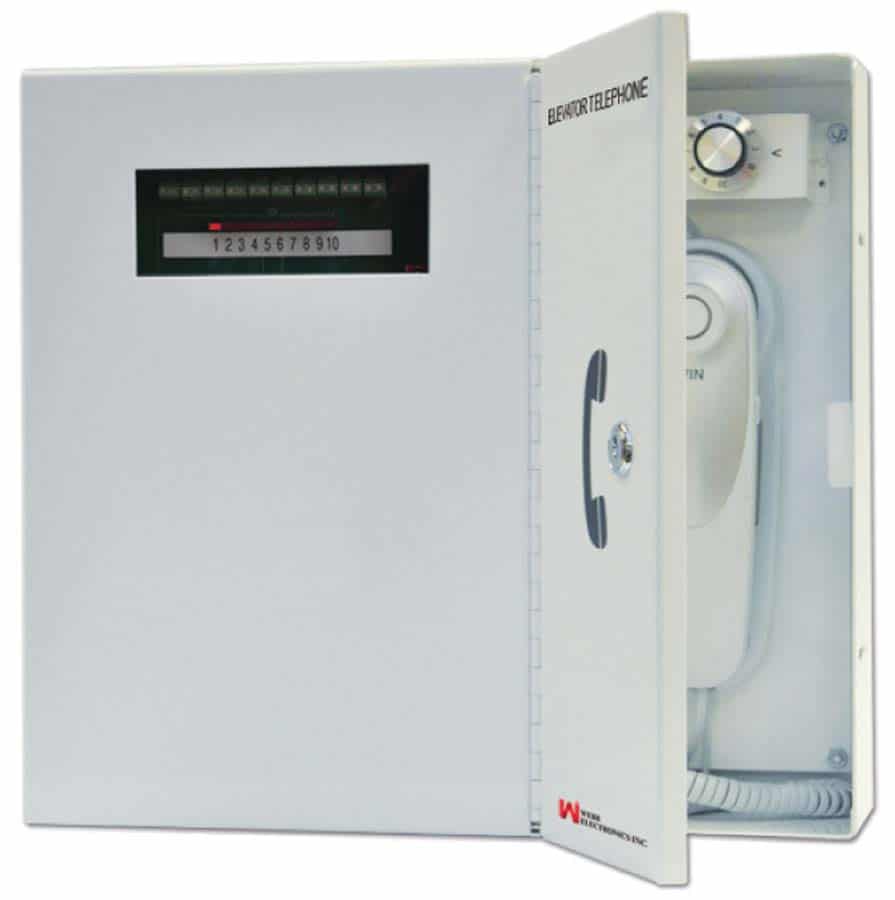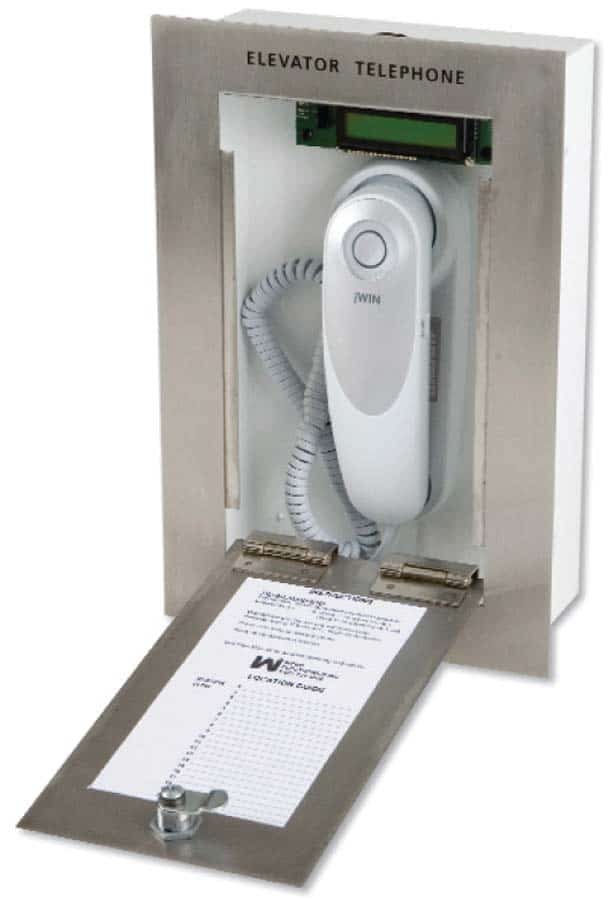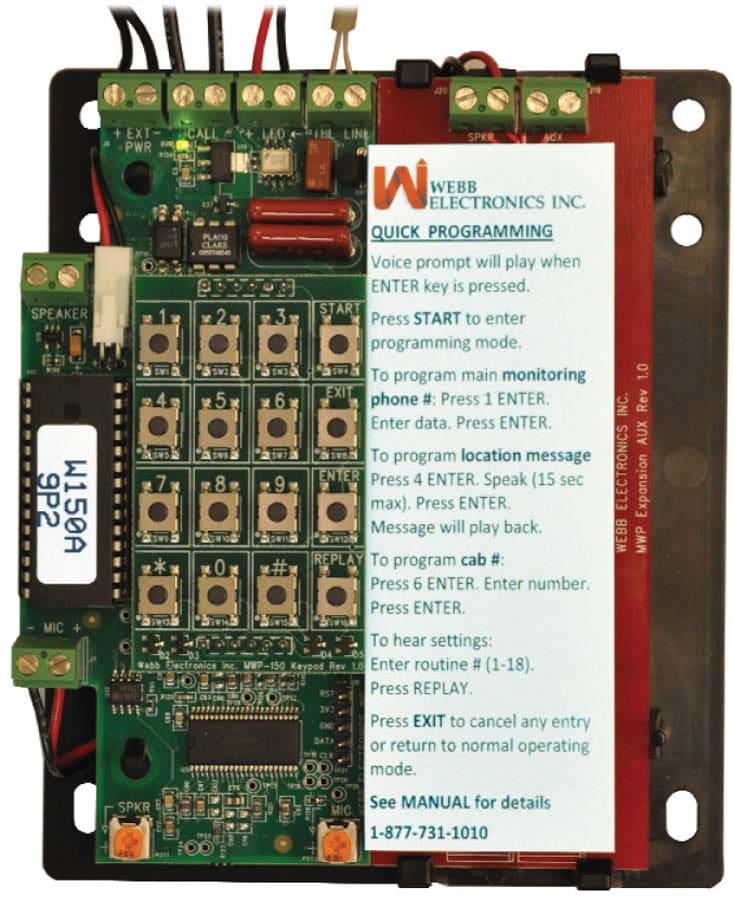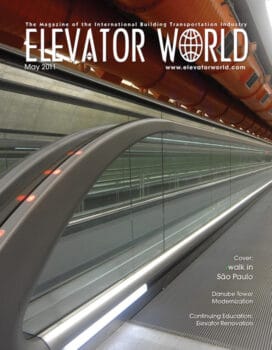Submitted by Webb Electronics, Inc.
The introduction of new technology is occurring at an incredible rate, changing the way people communicate. Connectivity has never been better, nor so complex. The number of new analog telephone land line installations for voice communication is decelerating, with a swing toward voice over Internet protocol (VoIP) phones and cellphones. Recent natural disasters indicate that the normally dependable utilities cannot be relied on and need to build in a higher degree of independence.
Emergency communication has historically been based on standard phone lines for life safety, but the long-term future of the analog public-switched telephone network (PSTN) is diminishing and will likely be incorporated into the Internet. Early digital phone systems such as integrated services digital network allowed transmission of voice and video for teleconferencing. To apply these concepts to a building or complex, Webb Electronics Inc. has developed the MWP-150 modular elevator phone with a module that multiplexes video and voice over the existing single twisted-pair phone line. This communication system can be self-sufficient within the complex (with battery backup) and/or transmitted outside over a phone line and the Internet.
Working with MAD Elevator Fixtures and MAD’s new Matisse Position Indicator, the response center can see inside the cab and be seen by the person requesting assistance, while holding a voice conversation.
The MWP-150 modular concept with multiplexing is intended/useful for enhancements and modernizations, because no additional traveling cable is required (see next section). Simply install the basic phone initially, and add the expansion modules in the future.
The Issues
Communicating from an elevator machine room to the outside world is often difficult, because the former is not a friendly cellphone environment, and land lines are seldom provided, but it can be a significant time saver and convenient for elevator maintenance. Communication between machine rooms, remote controllers and the cab (for instance, for machine-room-less elevators) is a requirement in many jurisdictions.
The Solution
The LS-250 system, initially conceived for calling into any elevator, usually has a telephone line connected. An MR-250MF Multi-Function Machine Room Phone can call into any elevator phone and machine room, as well as call out through the external telephone line. It can also receive calls from the lobby station and from outside. The MR-250MF can be added at any time and requires 2 STPs.
VoIP also offers significant opportunities, along with a few complications. The present Webb VoIP system can link phones over a large complex through optical fiber and can be used for a backup calling system and multiple simultaneous calls. One of the challenges is to generate trouble alarms if the communication medium (equivalent to the telephone line) is inoperable. (This is a new code requirement.)
The new code requires regular automatic checking to ensure that the emergency elevator phone line or equivalent communication medium is operable, and the generation of an alarm in the lobby is possble.
Another challenge is ensuring healthy battery backup for every component in the distributed internal communication chain and generating an alarm. Webb’s development drive is to harness these new technologies. The future of emergency communications should take advantage of new technologies to increase not compromise reliability. The power available from the PSTN is limited. If using the phone line to power a hands-free phone, this is limited to around 20 mA at the nominal off-hook voltage of 6V (providing around 120 mW for the phone electronics and speaker power). This may be difficult to hear above normal background noise.
MWP-150 Modular Panel-Mount Phone
The MWP-150 modular hands-free emergency telephone is mains powered (with battery backup) for exceptional sound quality. It is Americans with Disabilities Act compatible and can operate as a standalone system or with other Webb phones. When the “HELP” button is pressed, the phone automatically dials a pre-programmed number for assistance. The phone will determine whether the call is answered by a responsive human, and if not, will automatically disconnect and dial again. Megapixel video streaming, annunciator output and access-control card reader capabilities are other available options.
Webb also provides a full range of emergency phones designed specifically for the elevator industry, incorporating advanced technologies such as self-diagnostics and remote alert capability to provide a greater sense of comfort knowing that the customer’s emergency communications system is being monitored 24 hours a day, creating alerts whenever some unexpected event takes place. If damage occurs to wires, the customer is notified and can then take action to have the problem corrected. Subscribing to self-diagnostics program Autocheck automatically activates lifetime warranty for the phones.
Webb’s two-way video and audio components include clear enunciation and high resolution features. The company’s phones are made compliant and come with 68-dbA volume levels with minimum distortion and noise reduction circuitry to reduce interference. Their design, with precise quality-control standards, simplifies installation and programming.
Webb’s products include:
- Advanced diagnostics that detect and alert the customer to system problems such as loss of phone line or AC power, or the need for backup battery replacement
- Automatic notification of phone problems via e-mail
- Full integration
- Remote programming
- Rechargeable backup batteries
- Shared communications allowing both alarm and fax operations to be used over a single telephone line
- VoIP technology
About Webb Electronics
Webb started developing and installing emergency communication systems for elevators more than 20 years ago. Its full line of communication devices are manufactured in North America, with centers in the U.S. and Canada. The company is represented on the ASME A17/CSAB44 Emergency Operations Committee and strives to remain up to date with the latest developments in the industry.
Get more of Elevator World. Sign up for our free e-newsletter.
